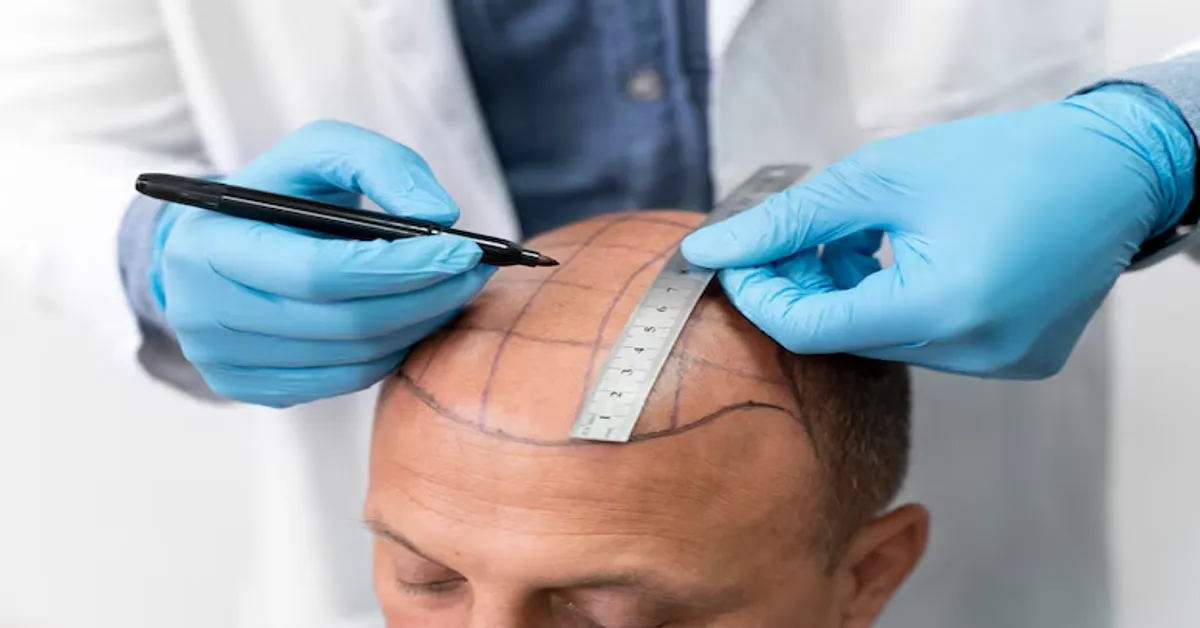Hair transplant procedures have become increasingly popular for individuals looking to restore hair loss and regain confidence. However, one of the most common concerns among potential patients is the hair transplant cost. The price of a hair transplant can vary significantly depending on factors such as location, clinic reputation, technique used, and the number of grafts required.
In this guide, we’ll break down the hair transplant cost, the factors influencing pricing, and what you should consider before undergoing the procedure.
What is a Hair Transplant?
A hair transplant is a surgical procedure that involves moving hair follicles from one part of the body (usually the back of the scalp) to an area experiencing hair loss. It is a permanent solution for hair restoration and can be performed using different techniques.
Types of Hair Transplant Procedures
There are two primary techniques for hair transplants, each with varying costs and effectiveness:
1. Follicular Unit Transplantation (FUT)
- Also known as the strip method.
- Involves removing a strip of scalp from the donor area and dissecting it into grafts.
- More affordable but leaves a linear scar.
- Suitable for patients needing a large number of grafts.
2. Follicular Unit Extraction (FUE)
- Individual hair follicles are extracted and transplanted.
- Less scarring and quicker recovery time.
- Typically more expensive due to the labor-intensive nature of the procedure.
Some clinics also offer DHI (Direct Hair Implantation), which is a variation of FUE that provides a more precise implantation process but can be more expensive.
Factors That Influence Hair Transplant Cost
The hair transplant cost depends on several factors:
1. Location
- Prices vary by country and city. Countries like Turkey offer more affordable procedures compared to the US or UK.
- High-cost living areas tend to have pricier clinics.
2. Clinic Reputation and Surgeon’s Experience
- Highly reputable clinics with experienced surgeons charge higher fees.
- Board-certified and well-reviewed professionals tend to have better results but at a premium price.
3. Number of Grafts Needed
- The transplant cost is usually calculated per graft, with rates ranging from $2 to $10 per graft.
- The more grafts required, the higher the overall cost.
4. Hair Transplant Technique Used
- FUE is generally more expensive than FUT because it requires more time and precision.
- Advanced techniques like DHI cost even more.
5. Pre-Operative and Post-Operative Care
- Some clinics include consultation fees, medications, and aftercare services in their package.
- Additional follow-up appointments or PRP therapy might be an extra expense.
Average Cost of Hair Transplant by Country
The hair transplant cost varies significantly depending on the country where it is performed:
| Country | Average Cost (USD) | Cost per Graft (USD) |
|---|---|---|
| United States | $4,000 – $15,000 | $4 – $10 |
| United Kingdom | $4,500 – $12,000 | $3 – $8 |
| Turkey | $1,500 – $5,000 | $1 – $3 |
| India | $1,000 – $3,500 | $0.50 – $3 |
| Canada | $5,000 – $15,000 | $3 – $9 |
| Australia | $5,000 – $12,000 | $3 – $8 |
Turkey is a leading destination for affordable hair transplants, offering high-quality procedures at a fraction of the cost in Western countries.
Cost Breakdown by Number of Grafts
| Number of Grafts | Estimated Cost (USD) |
| 500 – 1,000 | $1,000 – $4,000 |
| 1,500 – 2,000 | $3,000 – $8,000 |
| 2,500 – 3,500 | $5,000 – $12,000 |
| 4,000+ | $8,000 – $15,000+ |
- Smaller sessions (500-1,500 grafts) are suitable for early-stage hair loss.
- Larger sessions (2,500+ grafts) are required for advanced baldness.
Additional Costs to Consider
Aside from the base hair transplant cost of the procedure, other expenses may include:
- Consultation Fees – Some clinics charge an initial consultation fee ($100-$300).
- Medications – Pain relievers and antibiotics ($50-$200).
- PRP Therapy – Platelet-Rich Plasma therapy can cost an additional $300-$1,500 per session.
- Travel and Accommodation – If undergoing surgery abroad, consider airfare and hotel expenses.
Is a Hair Transplant Worth the Investment?
A hair transplant is a long-term investment in self-confidence and appearance. While the initial hair transplant cost may seem high, the permanence of results makes it more cost-effective than ongoing treatments like hair growth medications or wigs.
Pros: ✔ Permanent hair restoration. ✔ Natural-looking results. ✔ No need for continuous hair loss treatments.
Cons: ❌ Initial high hair transplant cost . ❌ Requires recovery time. ❌ Not suitable for everyone (depends on donor hair availability).
Final Thoughts
The hair transplant cost depends on multiple factors, including location, technique, and the number of grafts needed. While it can be a significant investment, the long-term benefits of natural hair restoration make it worthwhile for many individuals.
If you are considering a hair transplant, research clinics, compare prices, and consult with a specialist to determine the best option for you.
Frequently Asked Questions (FAQs)
1. How long do hair transplant results last?
Hair transplants are permanent, as transplanted hair follicles continue to grow naturally.
2. Does insurance cover hair transplants?
Most health insurance plans do not cover hair transplants, as they are considered cosmetic procedures.
3. How painful is a hair transplant?
Local anesthesia is used, making the procedure relatively painless. Some discomfort may occur post-surgery.
4. How long is the recovery process?
Most patients recover within 7-14 days, though full results take 6-12 months.
5. Can I undergo a second hair transplant?
Yes, some patients opt for a second session if additional density is desired.









